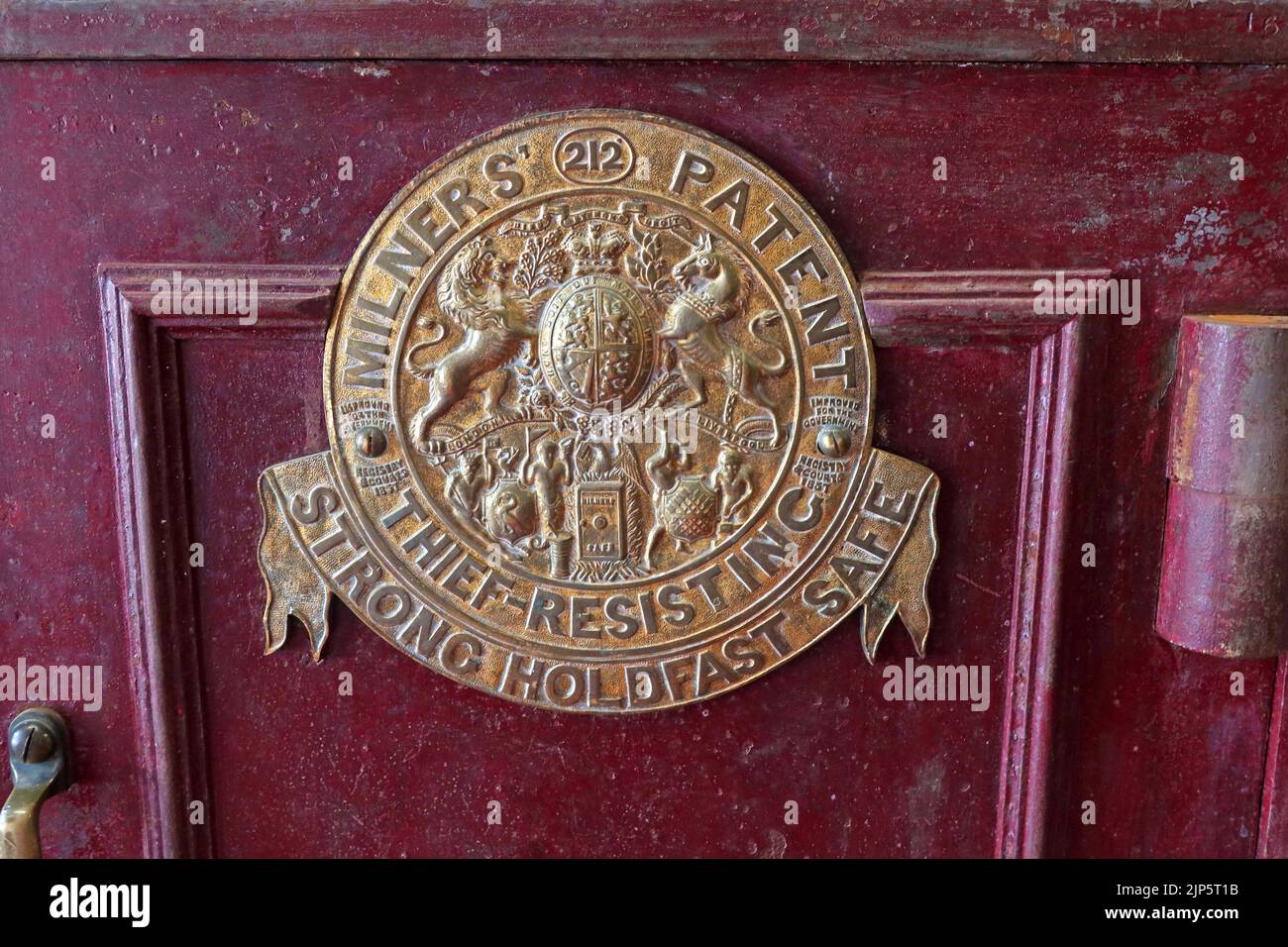Milners Patent, Thief Resisting, Strong Holdfast safe door, gold royal appointment seal

Image details
Contributor:
Tony Smith / Alamy Stock PhotoImage ID:
2JP5T1BFile size:
57.1 MB (2.8 MB Compressed download)Releases:
Model - no | Property - noDo I need a release?Dimensions:
5472 x 3648 px | 46.3 x 30.9 cm | 18.2 x 12.2 inches | 300dpiDate taken:
14 August 2022Location:
Speke, Merseyside, England, UKMore information:
The Milner Safe Company The founder, Thomas Milner, originally a tinsmith and metal box-maker from Sheffield, set up a safe manufactory in Liverpool in 1830 where he set about producing tin-plate and sheet iron boxes with his newly patented fire-resisting composition and was employing 35 men. From 1846, he moved on to strong plate iron safes and chests. Thomas died in 1849 leaving his son William as a partner in the newly named Milner & Son and so rapidly was the company growing that by 1851 they were employing 110 men. By this time they had developed and patented a gunpowder-proof and unpickable key lock in conjunction with Hobbs & Co.. His son-in-law Daniel Rowlinson Ratcliff had by this time joined the company as a partner. Considerable animosity had developed between Milners and George Price, a rival safe-maker from Wolverhampton with each indulging in very unprofessional practices. This was to lead to an incident when each party was publicly testing the others safes with gunpowder when Milner’s representative was over zealous in the charge he placed in one of Price’s safes resulting in a fatality. Shortly after this incident William Milner retired. In 1874, now called the Milner Safe Company, the factory was employing 480 men. By this time they were the largest manufacturer of safes and other security work in the world, a fact which they claimed in the London Trades Directory of 1900. Most familiar among the company’s products must be what is usually referred to as the square “church door Milner”- which is correctly known as the List 2 and which in the earliest models carried a cast iron moulding on the face of the door shaped like a Gothic arch. The heavier range of cash safes such as the List 3, 4 and 5 were still being made in the 4-corner bent banded body right into the 1900’s by which time every other maker had changed to the fully 12-corner bent body. In 1911, five Milner safes were supplied to Harland & Wolff for installation on the Titani